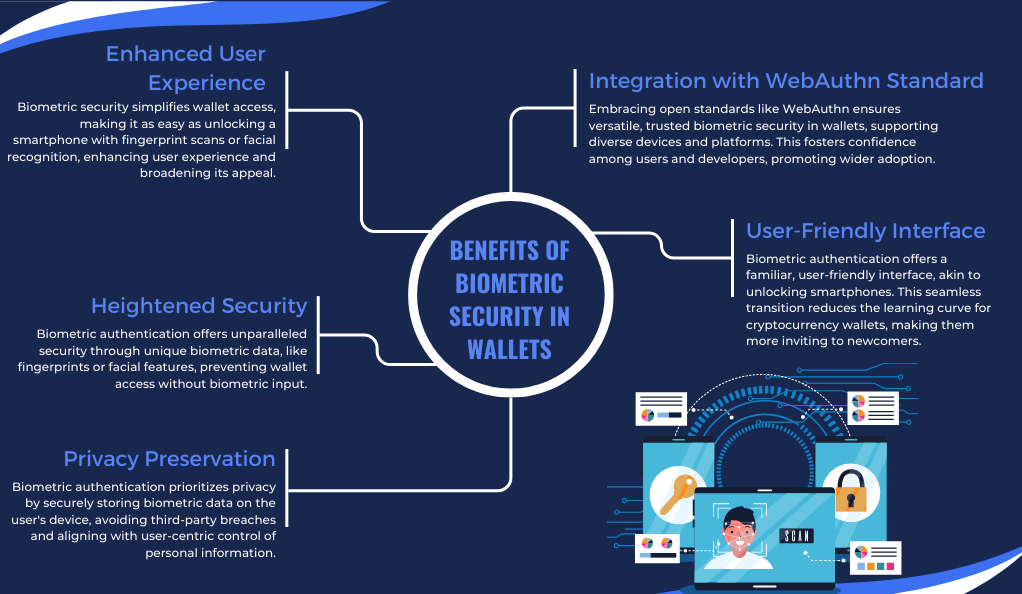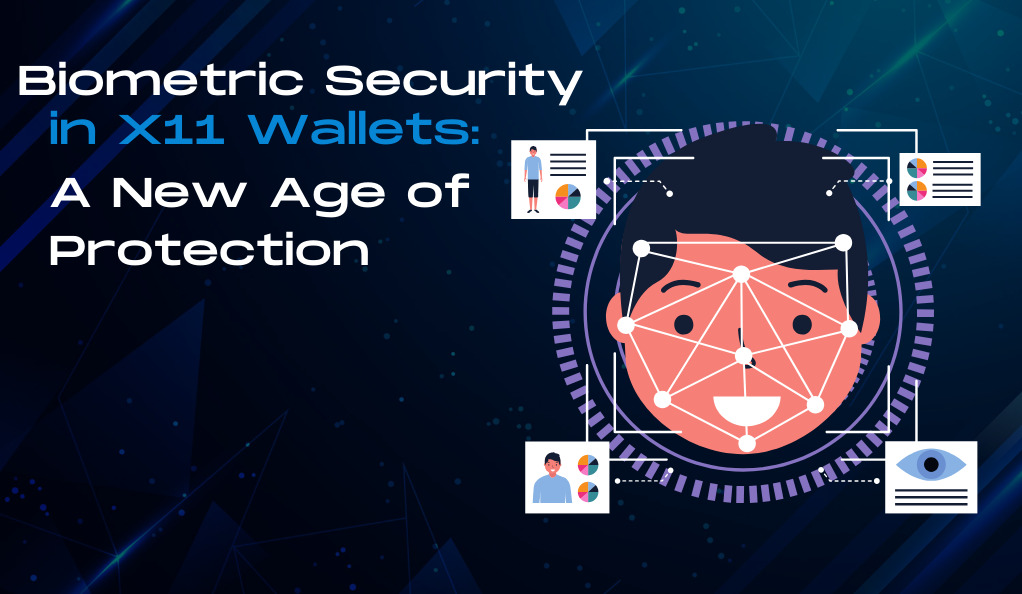In today’s digital age, the concept of security has evolved far beyond traditional locks and keys. As technology continues to advance, so does the sophistication of threats, making the need for robust security mechanisms more crucial than ever. Enter biometric security—a cutting-edge solution that leverages unique human characteristics for identification and authentication.
What is Biometric Security?
Biometric security refers to protective measures that use an individual’s unique physical or behavioral attributes for identification and access control. These attributes can range from fingerprints, facial recognition, and iris scans to voice patterns and even the way one types on a keyboard.
| Biometric Modality | Description | Use Cases |
|---|---|---|
| Fingerprint | Patterns of ridges and valleys on a fingertip | Smartphones, Door locks |
| Facial Recognition | Distinct facial features and structures | Airport security, Mobile device unlock |
| Iris Scan | Unique patterns in the colored part of the eye | High-security facilities |
| Voice Recognition | Individual voice patterns and wavelengths | Virtual assistants, Banking services |
| Behavioral | Typing rhythm, gait, or other behavioral patterns | Advanced security systems |
Biometric Security in the Realm of Cryptocurrency
The cryptocurrency domain, with its decentralized nature and high-value transactions, presents a lucrative target for cybercriminals. Traditional password-based security systems have shown vulnerabilities, from brute force attacks to phishing scams. Biometric security, with its inherent uniqueness, offers a promising solution to these challenges.
In the context of X11 wallets, which are designed to store and manage digital assets, biometric security can provide an added layer of protection. By ensuring that only the legitimate owner of the wallet can access its contents, biometric systems can significantly reduce the risk of unauthorized access and theft.
The Need for Enhanced Security in Crypto Wallets
The digital currency landscape has witnessed a meteoric rise in both adoption and value over the past decade. With this surge in popularity, however, comes an increased risk. The decentralized nature of cryptocurrencies, while one of its most lauded features, also makes it a prime target for malicious actors.
The FTX Exchange Collapse: A Cautionary Tale
One of the most significant wake-up calls in the crypto community was the collapse of the FTX exchange. This incident highlighted the vulnerabilities inherent in centralized systems. Thousands of users lost their investments overnight, not due to the volatile nature of the market, but because of security breaches. Such events underscore the importance of having a personal, secure wallet rather than relying solely on exchanges or custodians.
Why Personal Wallets Over Exchanges?
Exchanges, while convenient for trading and purchasing digital assets, often become honeypots for hackers. The centralized storage of vast amounts of cryptocurrency makes them attractive targets. Personal wallets, on the other hand, offer the following advantages:
- Decentralization: Unlike exchanges, where your assets are pooled with others, personal wallets ensure that your cryptocurrencies remain under your control, reducing centralized points of failure.
- Control Over Private Keys: In the world of crypto, owning your private key means owning your assets. Personal wallets ensure that you, and only you, have access to these keys.
- Flexibility: Personal wallets often support a broader range of cryptocurrencies than exchanges and allow for more transaction types, including participation in ICOs or staking.
However, the challenge with personal wallets, especially for newcomers to the crypto space, is their perceived complexity. Long strings of letters and numbers representing private keys can be daunting and difficult to manage. This is where the integration of biometric security can play a transformative role.
Biometrics: Bridging the Gap
The integration of biometric security into personal wallets aims to simplify the user experience without compromising on security. Instead of remembering complex passwords or safeguarding lengthy private keys, users can rely on their unique biological traits—be it a fingerprint or facial scan—to access their funds. This not only enhances security but also makes the process more intuitive, especially for those less familiar with the intricacies of blockchain technology.
Challenges with Traditional Crypto Wallets

As the digital currency ecosystem continues to mature, the tools and platforms designed to facilitate its use must evolve in tandem. Traditional crypto wallets, while foundational to the user experience, have not been without their challenges.
The Inconvenience of Private Keys
At the heart of every crypto wallet is the private key—a cryptographic equivalent of a password, granting its holder access to their digital assets. While incredibly secure, these keys, often represented as long alphanumeric strings, can be cumbersome to manage:
- Loss of Key: Unlike forgotten passwords, which can usually be reset via email, a lost private key means permanent loss of access to one’s assets.
- Manual Entry: Typing out or even copying and pasting long strings can be error-prone, leading to potential transaction errors or even loss of funds.
- Storage Issues: Safeguarding a private key requires secure storage solutions, from paper wallets to encrypted digital backups, each with its own set of vulnerabilities.
User Experience (UX) Barriers
For the average person, the world of cryptocurrencies can be daunting. The steep learning curve associated with blockchain technology, combined with the intricacies of wallet management, can deter many potential users. Key challenges include:
- Complex Interfaces: Many wallets, especially those catering to seasoned crypto enthusiasts, feature interfaces packed with jargon and complex functionalities.
- Backup Procedures: While essential for security, the process of backing up a wallet—often involving writing down recovery phrases—can be intimidating for newcomers.
- Fear of Mistakes: The irreversible nature of blockchain transactions means that a single mistake can result in permanent loss, a fact that can paralyze new users with fear.
The Promise of Biometric Integration
Biometric authentication offers a beacon of hope in addressing these challenges. By replacing or supplementing traditional authentication methods with biometric data, the process becomes both simpler and more secure:
- Simplicity: Accessing a wallet could be as easy as looking at one’s phone or placing a finger on a sensor.
- Enhanced Security: Biometric data, being unique to each individual, is incredibly difficult to replicate or steal, offering a level of security that alphanumeric passwords can’t match.
- User-Friendly: For the less tech-savvy, biometric authentication feels familiar, mirroring experiences they’ve had with modern smartphones and other devices.
The Advent of Biometric Authentication in Wallets
In the quest to make cryptocurrency more user-friendly and secure, enterprising innovators have recognized the potential of biometric authentication. Paris-based crypto security firm Dfns, for instance, has unveiled plans to incorporate biometric identification into its wallet-as-a-service toolkit. This move is poised to revolutionize the way crypto developers design and implement wallet security.
Dfns: Pioneering Biometric Integration
Dfns, having secured $15 million in funding, is at the forefront of this transformative wave. Their approach focuses on integrating biometric authentication, specifically facial recognition, fingerprint scanning, and other biometric data, into cryptocurrency wallet services. By doing so, they aim to tackle the often daunting user experience associated with traditional wallets.
The Beauty of Biometrics
What sets biometrics apart in this context is its efficiency in terms of user experience. Unlike traditional wallets that require users to remember and input complex passwords or manage lengthy private keys, biometrics make accessing a wallet as simple as a glance or a touch. It’s a process that feels intuitive and seamless to users, removing many of the barriers that have hindered broader cryptocurrency adoption.
The Role of WebAuthn Standard
Dfns’ biometric feature is built on the foundation of the open-source WebAuthn standard. This standard enables users to authenticate themselves without directly sharing their biometric data with third parties, ensuring that sensitive personal information remains secure. Everything required for authentication is securely stored on the user’s device, enhancing privacy and security.
Benefits of Biometric Security in Wallets

The integration of biometric security into cryptocurrency wallets brings forth a multitude of benefits that are poised to redefine how individuals interact with their digital assets. These advantages not only address the challenges posed by traditional wallet security but also introduce new dimensions of convenience and trust.
1. Enhanced User Experience
One of the most prominent advantages of biometric security in wallets is the elevated user experience it offers. Traditional methods of accessing wallets through passwords or private keys can be cumbersome, especially for those new to the cryptocurrency world. Biometrics simplify the process to the point where unlocking a wallet becomes as intuitive as unlocking a smartphone. A quick fingerprint scan or facial recognition eliminates the need to remember complex strings of characters, making it accessible to a broader user base.
2. Heightened Security
Biometric authentication provides an additional layer of security that is unparalleled in the realm of traditional passwords. Each person’s biometric data, whether it’s a fingerprint or facial features, is unique and exceptionally difficult to replicate or forge. This uniqueness ensures that even if someone gains access to your device, they won’t be able to unlock your wallet without your biometric input.
3. Privacy Preservation
Concerns regarding privacy are paramount in the digital age. Biometric authentication in wallets addresses these concerns by keeping biometric data securely stored on the user’s device. This means that the biometric data does not leave the device, reducing the risk of third-party data breaches. It aligns with the principles of user-centric control over personal information.
4. Integration with WebAuthn Standard
The adoption of open standards, such as WebAuthn, ensures compatibility and trust within the ecosystem. By adhering to established standards, biometric security in wallets becomes more versatile, supporting various devices and platforms. This standardization fosters confidence among users and developers alike, driving wider adoption.
5. User-Friendly Interface
Biometric authentication provides a familiar and user-friendly interface. Most individuals are already accustomed to using biometrics to unlock their smartphones, which makes the transition to biometrically secured wallets seamless. This familiarity reduces the learning curve associated with cryptocurrency wallet usage, making it more inviting to newcomers.
Comparative Analysis: Dfns vs. Coinbase
In the ever-evolving landscape of cryptocurrency wallets, it’s essential to understand the nuances of different approaches to security. While Dfns is pioneering the integration of biometric security, other wallet services, like Coinbase, have their own methods of safeguarding digital assets. Let’s delve into a comparative analysis of these approaches to gain a better understanding of the intricacies involved.
Dfns: Multi-Party Computation (MPC) and Delegated Signing
Dfns’ approach to wallet security combines two fundamental techniques: Multi-Party Computation (MPC) and Delegated Signing. This unique combination sets it apart from traditional wallet providers like Coinbase.
- Multi-Party Computation (MPC): Dfns employs MPC to secure private keys. MPC is a cryptographic technique that allows multiple parties to jointly compute a function over their inputs while keeping those inputs private. In the context of wallets, this means that the user’s private key is split across a distributed network of nodes, ensuring that no single entity has full access to it. This fragmentation enhances security by reducing the risk of a single point of failure.
- Delegated Signing: In addition to MPC, Dfns utilizes a technique called “delegated signing.” This method further enhances security by distributing the signing process across a network of nodes. It reduces vulnerability to downtime and enhances the wallet’s resilience.
Coinbase: Multi-Party Computation (MPC)
Coinbase, one of the leading cryptocurrency exchange and wallet providers, also employs Multi-Party Computation (MPC) to secure users’ private keys. However, there are some key differences in how Coinbase and Dfns implement this technique.
- MPC at Coinbase: Coinbase utilizes MPC as well but without the added layer of delegated signing. This means that while private keys are secured through fragmentation, the signing process remains centralized, requiring interaction with Coinbase’s servers.
Comparing Security Approaches
The security approaches of Dfns and Coinbase both prioritize the use of MPC, which is known for its robustness in protecting private keys. However, Dfns’ inclusion of delegated signing enhances security by distributing key management and signing responsibilities across a decentralized network. This approach makes wallets less vulnerable to both technical failures and regulatory scrutiny.
Conclusion
The integration of biometric security into cryptocurrency wallets represents a pivotal shift towards safeguarding digital assets while ensuring user-friendly accessibility. With enhanced security, simplified user interfaces, and privacy preservation, biometrics offer a compelling solution for both seasoned and new crypto users.
Innovations like those by Dfns, which combine biometrics with multi-party computation (MPC) and delegated signing, not only bolster security but also align with evolving regulatory expectations.
The future holds promise for biometric security, with emerging methods and broader adoption on the horizon. As technology advances, the crypto ecosystem is poised to provide even more secure and inclusive financial services.
At axerunners.com, our goal is to furnish well-rounded and trustworthy information regarding cryptocurrency, finance, trading, and stocks. Nonetheless, we avoid providing financial advice and instead encourage users to conduct their own research and meticulous verification.
Read More











